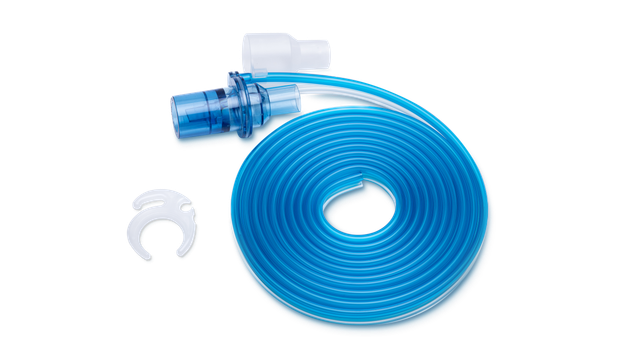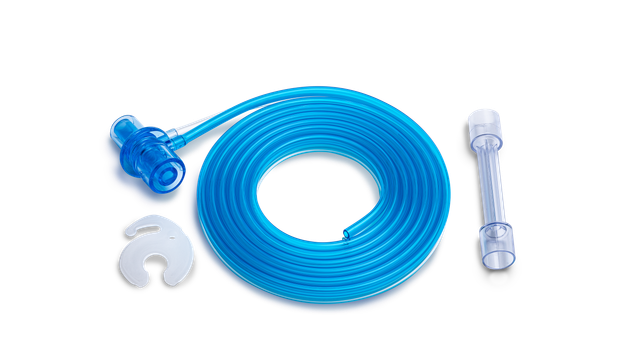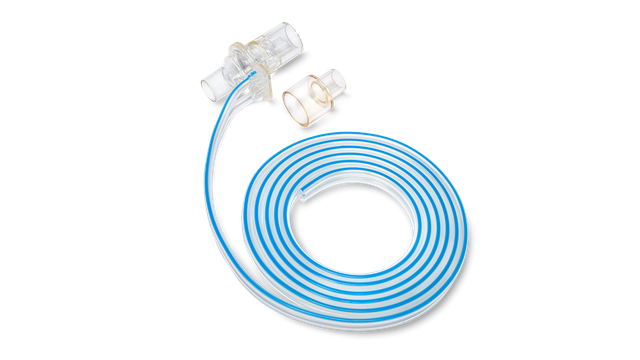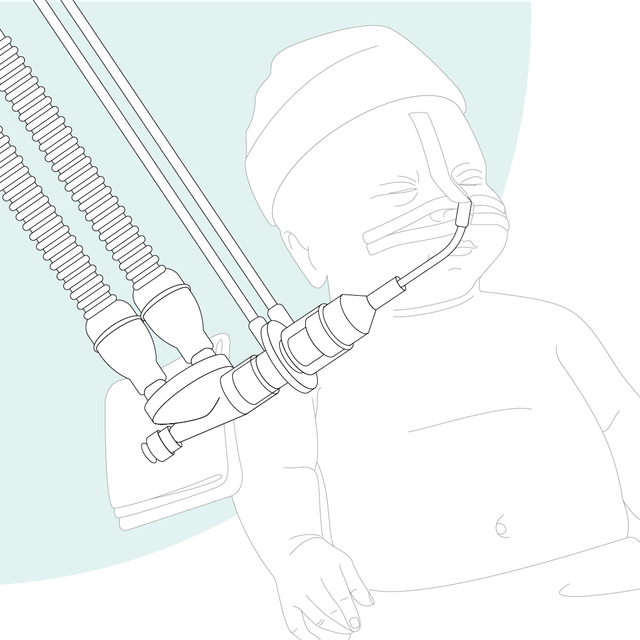
¡Acérquese! Medición de flujo proximal
El sensor de flujo proximal ha sido la piedra angular de nuestros respiradores desde 1983. Todo el proceso de ventilación depende de la medición y precisión del sensor de flujo, que proporciona datos procedentes de la apertura de las vías aéreas.
La obtención de datos de presión, flujo y volumen precisos es fundamental para emitir un diagnóstico correcto y evitar los efectos secundarios habituales consecuencia de la configuración incorrecta del respirador. También admite algunas de nuestra tecnologías avanzadas, como los modos ASV e INTELLiVENT‑ASV, además de IntelliSync+ y P/V Tool.

La precisión es prioritaria. Sus pacientes dependen de ella.
Nuestros respiradores miden el flujo y la presión cerca de la vía aérea del paciente. Los estudios han demostrado que los volúmenes tidales de los pacientes con ventilación se deben determinar con un sensor de flujo ubicado en el tubo endotraqueal (

¿Tiene alguna prueba? Datos clínicos
La determinación precisa del volumen tidal espiratorio (VTE) es fundamental (
Beneficios para usted:
- La colocación proximal elimina los efectos de la compliance del circuito respiratorio en las mediciones de flujo y volumen (
Cannon ML, Cornell J, Tripp‑Hamel DS, et al. Tidal volumes for ventilated infants should be determined with a pneumotachometer placed at the endotracheal tube. Am J Respir Crit Care Med. 2000;162(6):2109‑2112. doi:10.1164/ajrccm.162.6.99061121 ) - La medición del VTE se ve sometida a una menor resistencia del sistema respiratorio (
Nève V, Leclerc F, Noizet O, et al. Influence of respiratory system impedance on volume and pressure delivered at the Y piece in ventilated infants. Pediatric Critical Care Med. 2003;4(4):418‑425. doi:10.1097/01.PCC.0000090289.98377.153 ) - Se producen menos fugas que puedan alterar el resultado (
Al‑Majed SI, Thompson JE, Watson KF, Randolph AG. Effect of lung compliance and endotracheal tube leakage on measurement of tidal volume. Crit Care. 2004;8(6):R398‑R402. doi:10.1186/cc295444 )
Nuestra gama de sensores de flujo
Ofrecemos material fungible de Hamilton Medical para pacientes adultos, pediátricos y neonatos. Puede elegir entre productos reutilizables o desechables, en función de las políticas de su centro sanitario.

Sensor de flujo proximal desechable para pacientes pediátricos y adultos
- Tubo disponible en tres longitudes diferentes: 188, 260 y 330 cm
- DE22/DI15, lado del paciente
- Adaptador de calibración
- Lengüeta para tubo

Sensor de flujo proximal desechable para pacientes neonatos
- Tubo disponible en tres longitudes diferentes: 160, 188 y 310 cm
- DI15, lado del paciente
- Adaptador de calibración
- Lengüeta para tubo

Sensor de flujo proximal reutilizable para pacientes pediátricos y adultos
- Longitud del tubo: 188 cm
- DE22/DI15, lado del paciente
- Adaptador de calibración
- Cintas de conexión de los tubos

Testimonios de clientes
Los sensores de flujo desechables de Hamilton Medical ayudan a evitar la contaminación cruzada, ya que no hay que preocuparse de que vuelvan a utilizarse en otro paciente.
Dr. Robert Lopez
Director del departamento de Asistencia Respiratoria hasta 2018
University Medical Center, Lubbock (TX), EE. UU.

¡Siga aprendiendo! Cómo utilizar correctamente el sensor de flujo
Más información
Flow sensor technical specifications
Tidal volumes for ventilated patients should be determined at the endotracheal tube
Reprocessing Guide Flow sensor
Instructions for use adult/pediatric, flow sensor, single use
Referencias
- 1. Cannon ML, Cornell J, Tripp‑Hamel DS, et al. Tidal volumes for ventilated infants should be determined with a pneumotachometer placed at the endotracheal tube. Am J Respir Crit Care Med. 2000;162(6):2109‑2112. doi:10.1164/ajrccm.162.6.9906112
- 2. Gammage, Gary W.; Banner, Michael J.; Blanch, Paul B.; Kirby, Robert R. VENTILATOR DISPLAYED TIDAL VOLUME‑WHAT YOU SEE MAY NOT BE WHAT YOU GET, Critical Care Medicine: April 1988 ‑ Volume 16 ‑ Issue 4 ‑ p 454
- 3. Nève V, Leclerc F, Noizet O, et al. Influence of respiratory system impedance on volume and pressure delivered at the Y piece in ventilated infants. Pediatr Crit Care Med. 2003;4(4):418‑425. doi:10.1097/01.PCC.0000090289.98377.15
- 4. Al‑Majed SI, Thompson JE, Watson KF, Randolph AG. Effect of lung compliance and endotracheal tube leakage on measurement of tidal volume. Crit Care. 2004;8(6):R398‑R402. doi:10.1186/cc2954





